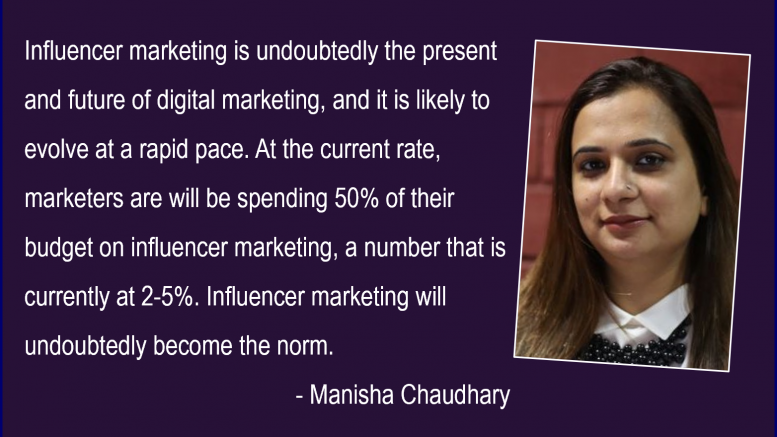“The key is, no matter what story you tell, make your buyer the hero” – Chris Brogan
This hypothesis by the social media maven and digital marketing veteran is not just relevant but also right on the money. Not one business in this day and age can survive, let alone thrive, without making its consumers the most pivotal part of every decision. In the competitive and ever-changing world of digital marketing, consumer centricity is even more critical.
Today, content consumption patterns are starkly different than they were just a decade ago. A quick flashback will transport us to a time when content consumption across 24 hours was divided between newspapers, television, and radio. When online media came into the picture, the pattern shifted quickly. Digital media carved out a larger piece of the consumer consumption pie once music, videos, and news started being conveniently delivered through digital outlets.
This was the era of internet search. Users logged on to digital platforms like YouTube, actively searched for their movies, music, or topics of choice and proceeded to consume the content they preferred. It was habitual and sought out content that ruled the roost during this period.
Then, digital natives, namely millennials and GenZ, came into the picture and upturned every ongoing digital media trend. These users consumed 80% of their content through social media platforms like YouTube, Instagram, and Twitter. The amount of content consumed through television, newspaper, and magazines became negligible within this cohort.
Another shift took place alongside this – when social media became the primary outlet for entertainment and education, there was a rise in user-generated content. This was akin to peer-to-peer information-sharing, where one individual created content for the larger community. This could be as simple as a consumer sharing a food or movie review or something more complex like a vlog depicting the most fun things a traveller did at a particular holiday destination.
Lo-and-behold, the concept of creators was born. Creators from across the globe started creating different kinds of content – long videos, short videos, text, images – on every topic under the sun, just waiting to be discovered by users. The wheels of evolution turned for digital media and the era of habit-based, searched content gave way to the current stage.
The age of discovery-based content consumption
From habitual content consumption, users have now moved to discovery-based consumption. In a world where a staggering amount of content is pushed towards consumers from all sides, digital media has ensured that there is a specific intent behind every piece of content that they discover.
Let’s unpack this with an example: In the past, a brand looking to target a CEO would look for space in ET. Similarly, a brand looking to reach a mom would perhaps consider Femina. These were habitual publications for these cohorts. This has now changed completely. The CEO, the homemaker, the fitness enthusiast, the fashion enthusiast – they’re all on social media platforms like YouTube, Instagram, and now Threads, discovering new and engaging content.
The good part is this discovery is based on an algorithm. Social media platforms are governed by algorithms that detect consumption patterns. A user has the power to view or ignore a post that they discover while scrolling through their feed. The algorithm identifies the kind of content they prefer and push similar posts toward their feeds. So, if you prefer fitness content and engage with such posts, your feed will display a majority of content by fitness creators. The instances of you stumbling across content you are not interested in will minimize or completely end. It’s not magic, it’s algo!
And this brings us to marketers. Social media and its algorithms have made it made it possible for brands to reach not just their target audience, but to reach actively engaged and interested target groups. Marketing efforts reach where they should with minimal spillover, displaying the precise efficiency that only technology could offer. But, this only happens when marketers understand and master the discovery model.
Simply put, we are at an inflexion point where marketers must reverse engineer their strategy by thinking through the consumer lens. In the age of fleeting attention spans, they will have to build a scalable strategy for content creators to attract maximum consumer attention. Traditional marketing methods are simply not enough. Consumers are on social media, and that’s where brands need to be. This can be done most effectively with creators. Marketers that have cracked the code understand that influencers need to be their vehicle of content to succeed in the discovery-based content consumption era.
The complete revamp of digital marketing strategies thanks to the changing interests of new-age consumers – that is the inherent power of consumer behaviour.
Looking down the road: The future of consumer behaviour in digital marketing
It is apparent new-age consumers trust experts from within their community more than unapproachable celebrities while choosing brands. We’ve seen the biggest brands like Nike, Pepsi, and Adidas, rope in influencers for their digital marketing campaigns, solidifying the effectiveness of influencer marketing in the time of discovery-based content consumption.
Influencer marketing is undoubtedly the present and future of digital marketing, and it is likely to evolve at a rapid pace. At the current rate, marketers are will be spending 50% of their budget on influencer marketing, a number that is currently at 2-5%. Influencer marketing will undoubtedly become the norm.
In the distant future, influencer marketing will continue to rule the digital marketing landscape, but its overarching purpose will change. Once more, we will see a change in consumer behaviour as they become less receptive to products advertised by influencers. Once impulse purchasing on the back of influencer content reduces, influencers will then carry out more of an awareness purpose – so consumers can continue to discover new, relevant products on the platforms they visit the most.
Reverse engineering of consumer behaviour will still be in play, and marketers will continue to tailor their digital marketing efforts in tandem with influencers to make sure they are discovered by the right audience and remain in the comfortable top-of-mind recall bracket.
Finally, this brings us back to Mr Brogan’s words – make your buyer the hero. In the fast-evolving digital marketing space, this isn’t just sound advice, it’s the only option.
The views and opinions published here belong to the author and do not necessarily reflect the views and opinions of the publisher.
An abridged version of this article was first printed in the special edition of the Reputation Today magazine for PRAXIS 2023.



Be the first to comment on "The role of consumer behaviour in digital marketing"